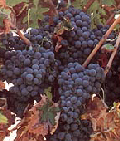Wine
 Portugal can offer more than Port wine, it is the long-forgotten wineland of Europe. When the English were in war with France, they had lost their wine supplies and looked for replacement. They found it around the Douro and because of the great outlet the wine production could flourish.Almost a third of the vineyards in Portugal are in the Alentejo. The climate with many sunny hours and chilling Atlantic winds is optimal for viniculture.
Portugal can offer more than Port wine, it is the long-forgotten wineland of Europe. When the English were in war with France, they had lost their wine supplies and looked for replacement. They found it around the Douro and because of the great outlet the wine production could flourish.Almost a third of the vineyards in Portugal are in the Alentejo. The climate with many sunny hours and chilling Atlantic winds is optimal for viniculture.
The wine region Alentejo is made up of the eight areas of Portalegre, Borba, Redondo, Reguengos, Vidigueira, Granja-Amarelja, Moura and Évora. The vines with the short stems often stand together with century-old olive trees. The difference to most other Portuguese growing areas is that in the Alentejo the number of different types of vines is narrow. The red wines are very fruity, topped-off and elegant. For white wines light, fresh and tangy plants.Private vineyards and big cooperative societies introduced modern wine production techniques in the last years - nowadays the region is said to be one of the most expansive ones in Portugal. Its present-day reputation is due to the sought-after cellarer João Ramos.
Wine-producing regions:
There are 47 wine-producing regions, in all of which various categories are to be found, as shown on the labels of the bottles, with the following abbreviations: VQPRD: "Vinho de Qualidade Produzido em Região Determinada" (Quality Wine Produced in a Demarcated Region) - this shows that the wine is of a high quality, with a limited production that is fixed each year by the supervisory authorities. Such wines are made from specific grape varieties in strictly demarcated regions. For a wine to be able to enjoy this category, it must satisfy strict requirements in relation to its colour, taste and aroma. Sometimes, this reference on the bottle is replaced by the simpler code RD - Região Demarcada (Demarcated Region). DOC: "Denominação de Origem Controlada" (Controlled Denomination of Origin) - production of these wines is linked to a strictly demarcated geographical region with particular characteristics, as established in special legislation. IPR: "Indicações de Proveniência Regulamentada" (Indications of Regulated Origin) - this indicates wines produced in regions that are passing through a transitional phase. During this period a close watch is kept on their characteristics and afterwards these wines may be included in the VQPRD category.
Vinhos Regionais (Regional Wines):
This category is used for table wines, for which the particular geographical origin is indicated. In the Minho region, in North-West Portugal, you must make sure to taste the famous Vinhos Verdes, genuinely refreshing wines that are perfect for hot days. The vines are grown on trellises (being suspended high in the air on special frames) and they lend a very picturesque atmosphere to the countryside.In the Douro region, the vines are grown on terraces, giving the impression of huge natural staircases leading down to the banks of the river. Both red and white wines are produced here and, of course, the famous Vinho do Porto (Port Wine), which has a strong and intense flavour when young and becomes softer and more velvety as it ages, producing the celebrated "vintage" wines. These unique qualities were recognised long ago and this was the first demarcated region to be established on a worldwide scale (in 1756). The demarcated region of Dão, where the vines are grown on the granite slopes of the hills to the south of the River Douro, is famous for its full-bodied and strong-flavoured reds, whilst further south is the region of Bairrada, which produces a range of dry but fruity whites. The grapes here are also used to produce a highly regarded sparkling wine of undeniable quality and distinctive flavour, which is to be found in the region around Lamego.Portugal`s vinhos rosados or rosés, which are dry or slightly sweetened, are well known all over the world, being famous for their colour, freshness, unmistakable aroma and high quality.
Close to Lisbon are the demarcated regions of Bucelas, which produces soft, slightly acidic wines, Carcavelos, producing what is now one of the world`s rarest wines, and Colares, where the vines are grown in sandy ground, which gives them a completely different flavour.To the south of the River Tagus is the region of Setúbal, which has given its name to a sweet fortified wine, mainly produced from the Moscatel grape, although the surrounding region also produces robust reds and light white wines.
The Alentejo region (Borba, Vidigueira, Redondo and Reguengos) is the home of some vibrant reds and high-quality white wines, whilst the Algarve produces smooth, aromatic wines. Because of its sub-tropical climate, volcanic soil and distinctive grape varieties, Madeira is able to produce a very special full rich wine, which has taken the name of the island and is famous throughout the world for its quite unique qualities.
| Back |  |
 |
 |
Azulejos |
Information:
This page shows basic information. There is no guarantee for the correctness and completeness of the given facts. The page is regularly updated.






